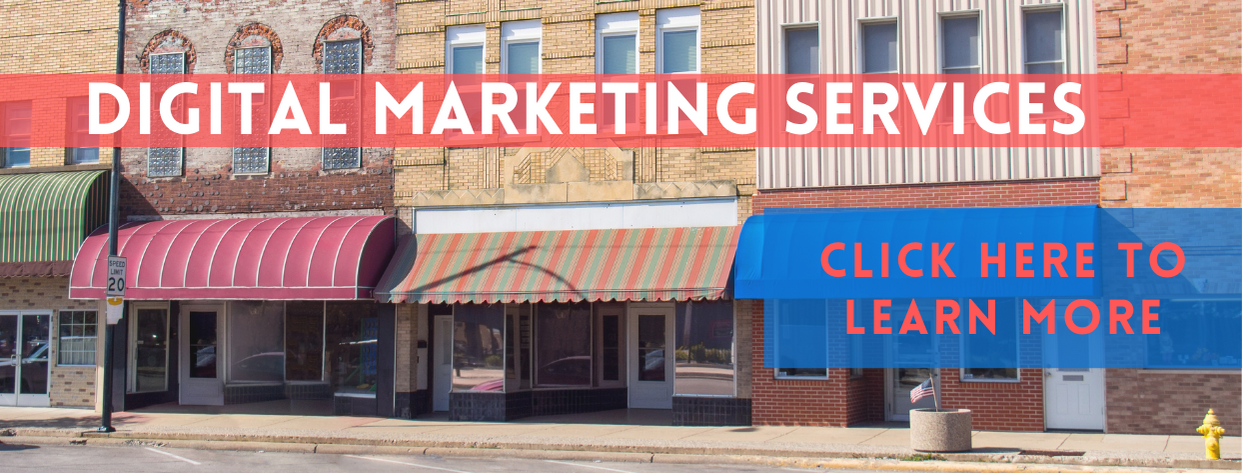Content Marketing And Nonprofits: A Great Combination
By Jaco Grobbelaar on Wed, Aug 28, 2024 @ 01:29 PM

[This article was last published in October 2023 and has been expanded and revised.]
Content marketing for nonprofits is highly effective. As nonprofits still have to "market" their message, a nonprofit content marketing strategy is key.
For some, the terms "marketing" and nonprofit organizations seem contradictory and somehow crass. But, at its core, marketing is simply promoting what you have to offer. And most nonprofits have much to offer!
We May Be a Nonprofit, But We Still Need Resources and Money
While some folks might shy from using the term "marketing" for what non-profits must engage in, the fact is that, profit or no, organizations need money to function. And, more to the point, non-profits need money to achieve their collective missions.
And, as we noted already, marketing can be defined as simply promoting something.
According to Google, marketing is:
“the action or business of promoting and selling products or services, including market research and advertising.”
If one where to leave off the "selling" component, the definition still serves sufficiently to describe the basic essence of marketing. Consequently, what every non-profit, for-profit, employee or prospective date or spouse engages in at some point, is marketing.
The BalanceSMB website goes a step further with this explanation:
"Nonprofit marketing is the use of marketing tactics by a nonprofit organization, that promotes the message and the organization. Marketing is particularly important for a nonprofit organization, as they usually need ways to market their cause to volunteers who would want to help and to donors that will give to their cause."
So, with that clarified, we need to ask: What are nonprofits promoting?
Essentially, two things:
- They must promote the vision behind their mission in order to engage and win the support of prospective donors, sponsors and volunteers.
- And they must promote their ongoing need for funding. The two are usually intertwined, especially in the case of donors and sponsors, but the major tool for accomplishing this is marketing.
The larger challenge for nonprofits then, is to determine the best marketing approach and strategy to achieve these objectives.
Traditional Advertising, Direct Mail, and Social Events
While there is certainly nothing wrong with these tactics, the fact is that the Internet, social media and the rise of new generation of media users has shifted the efficacy of marketing.
There was a time when even the concept of "content marketing" was unknown. At least by that terminology. However, content has always been "king', even in the traditional marketing realm.
And, for a variety of reasons, many of these approaches are still effective, valid and likely to be the norm in the world of nonprofits for years to come.
But content marketing can offer a nitro-charged impact on the collective marketing efforts of any non-profit, if executed properly. And it can work in tandem with the more traditional tactics in what is sometimes known as a cross-channel, or multi-channel, strategy.
The folks at WordStream describes it as follows:
Multi-channel marketing is the practice of using multiple channels to reach customers. Also known as cross-channel marketing, multi-channel marketing also makes it easy for customers to complete desired conversions on whatever medium they are most comfortable with. Multi-channel marketing lets the user decide, giving them a choice.
In today’s modern marketing era, there are many channels a business can take advantage of in order to reach potential customers. These channels include: Retail store, PPC, Website, Direct mail, Email, Mail order, catalog, and Mobile
Understanding What Content Marketing Is
Content marketing, often referred to as inbound marketing, involves creating valuable, quality content to boost brand awareness, engagement, and customer loyalty. While this might sound similar to traditional marketing in terms of goals, the approach is distinctly different.
Content marketing focuses on building a web of multi-platform content that organically educates and engages consumers. Instead of relying on disruptive ads, content marketing leverages effective SEO strategies, making it easy for potential customers to discover the content through their own search queries.
By placing the decision-making power in the hands of consumers, this approach builds trust without pressuring them into immediate purchases. Unlike traditional marketing, which interrupts audiences with ads, content marketing provides valuable information that naturally attracts leads as they research products. Popular formats include blogs and social media posts.
What Defines "Quality" Content?
Quality content is content that engages your audience while enhancing their perception of your brand. There’s no single formula—content allows for endless creative possibilities. However, the key is to focus on what your audience is actively searching for and what they’re likely to share with colleagues, friends, and family. The goal is to create content that can educate, entertain, and engage your audience.
Traditional Nonprofit Marketing Strategies: A Pre-Digital Overview
As we alluded to above, before the advent of digital content marketing, non-profit organizations relied heavily on traditional marketing strategies to build awareness, engage communities, and drive fundraising efforts.
Although these tactics may seem dated in today’s digital-first world, they were - and often still are - highly effective in creating meaningful connections and raising funds. Understanding these strategies offers valuable insights into how nonprofits can blend tried-and-true methods with modern approaches.
In addition, each of these more traditional, or non-digital, strategies lend themselves to both supplementing and providing material for content marketing efforts.
Direct Mail Campaigns
One of the most commonly used tactics in traditional non-profit marketing was direct mail. Non-profits would send out newsletters, donation request letters, and promotional materials to their donor base. Direct mail campaigns were targeted, often personalized, and designed to evoke an emotional response. Handwritten notes, compelling stories, and heartfelt appeals were central to encouraging recipients to donate or attend an event.
While costly in terms of printing and postage, direct mail allowed nonprofits to reach supporters directly. Organizations meticulously segmented mailing lists based on donor behavior, demographics, and past engagement to optimize responses, much like we do with email lists today. The tangible nature of direct mail often made recipients feel a personal connection to the cause.
Print Advertising
Print advertising in newspapers, magazines, and local publications was another key component of non-profit marketing. Whether it was a small classified ad or a full-page feature, these placements helped nonprofits reach a broader audience. Local newspapers were particularly effective for smaller organizations that wanted to raise awareness within their community. Larger non-profits with bigger budgets might invest in national publications, especially when promoting major campaigns or advocacy issues.
These ads often highlighted success stories, impactful statistics, or urgent needs. Compelling visuals and concise copy were critical to capturing attention and communicating the cause’s urgency. Print advertising also provided opportunities for nonprofits to partner with media outlets, gaining discounted ad space or even free placements in exchange for publicity.
Community Events and Fundraisers
Non-profits have always relied on in-person events to engage their supporters and build relationships. Galas, charity runs, silent auctions, and bake sales were popular fundraising methods that allowed organizations to interact directly with their community. These events were often coupled with marketing campaigns to boost attendance, attract media coverage, and increase donations.
Event marketing was also about creating experiences that resonated with participants. By hosting memorable events, nonprofits could cultivate a sense of belonging and shared purpose among supporters. Word-of-mouth marketing played a significant role here, as satisfied attendees would often spread the word, expanding the organization’s reach.
%20(1000%20x%20550%20px)%20(1).jpg?width=1000&height=550&name=Copy%20of%20Cream%20Minimalist%20Photography%20Presentation%20(1000%20x%20550%20px)%20(1000%20x%20550%20px)%20(1).jpg)
Public Relations and Media Outreach
Public relations (PR) was another cornerstone of nonprofit marketing. Organizations sought to build relationships with journalists and media outlets to secure coverage in newspapers, radio shows, and television broadcasts. Press releases, media kits, and press conferences were the primary tools nonprofits used to share news about their initiatives, successes, or urgent needs.
Strategic media coverage helped nonprofits amplify their message and reach audiences beyond their immediate circle. Positive press could enhance credibility, attract new donors, and create momentum around campaigns. Nonprofits organizations often cultivated numerous long-term relationships with key media contacts to ensure consistent coverage.
Partnerships and Sponsorships
Forming partnerships with businesses, local governments, and other organizations was a common non-digital marketing strategy for nonprofits. By collaborating with like-minded entities, nonprofits could expand their reach, pool resources, and create joint campaigns. Corporate sponsorships were particularly valuable for securing funding, and in return, businesses would receive recognition in marketing materials, event signage, and press releases.
These partnerships often involved cross-promotion, where both parties would advertise each other’s initiatives through their respective networks. For example, a nonprofit might partner with a local business to sponsor an event, with the business promoting the event in-store and online. In turn, the non-profit would recognize the sponsor at the event and in promotional content.
Grassroots Campaigning
Grassroots efforts were at the heart of many nonprofit movements before digital content marketing became prevalent. This involved mobilizing volunteers and supporters to spread the word, distribute flyers, or canvass neighborhoods. Grassroots campaigns were highly localized and relied on building trust and strong relationships within the community.
Flier distribution, door-to-door outreach, and poster campaigns were common tactics. Non-profits would also set up booths at local fairs, markets, and public gatherings to raise awareness and connect with potential donors. This approach was often low-cost but highly labor-intensive, requiring a committed volunteer base.
Telemarketing and Cold Calling
Though less prominent today, telemarketing was a staple for nonprofit fundraising in the pre-digital era. Organizations would conduct phone campaigns to solicit donations, promote events, or provide updates to supporters. Today, all of this and more can be done far more efficiently and cost-effectively with email campaigns.
Nonprofits carefully trained their callers to be personable, knowledgeable, and empathetic, recognizing that a warm, conversational approach could make all the difference in securing a donation.
While telemarketing was often met with mixed reactions, it was a direct way to engage with potential donors and maintain regular contact with existing supporters. Some organizations even outsourced this function to specialized fundraising companies, ensuring they could scale up campaigns when needed.
The Power of Content Marketing for Nonprofits: Strategies and Benefits
In today's digital age, the importance of effective marketing cannot be overstated. This holds true not only for businesses but also for nonprofit organizations that aim to make a positive impact on society.
Nonprofits can benefit greatly from content marketing, a strategy that, when used correctly, can help them raise awareness, engage with their audience, and drive their mission forward.
Here are some of the benefits for nonprofits using content marketing and examples of content marketing strategies tailored to nonprofit organizations.
The Benefits of Content Marketing for Nonprofits
-
Increased Visibility and Awareness: One of the primary benefits of content marketing for nonprofits is the ability to increase their visibility and raise awareness about their cause. By consistently producing high-quality content, nonprofits can educate their audience about the issues they address and the solutions they provide.
-
Engagement and Trust Building: Content marketing allows nonprofits to engage with their audience on a personal level. Through blogs, social media, and other content channels, nonprofits can foster a sense of trust and authenticity, which is crucial for gaining supporters, donors, and volunteers.
-
Donor and Volunteer Recruitment: Content marketing helps nonprofits connect with individuals who are passionate about their cause. By sharing compelling stories, success stories, and testimonials, nonprofits can inspire individuals to get involved, whether it's through donations or volunteering.
-
Cost-Effective Fundraising: Content marketing can be a cost-effective way for nonprofits to fundraise. Instead of relying solely on traditional fundraising events, they can use online campaigns, email marketing, and social media to reach a broader audience and collect donations more efficiently.
-
Educational Resources: Nonprofits often focus on addressing complex social issues. Content marketing allows them to create informative and educational content that helps the public understand these issues better. Whether it's through whitepapers, infographics, or webinars, nonprofits can be a source of valuable information.
Effective Content Marketing Strategies for Nonprofits
It's easy to say to a nonprofit Marketing and Communications Director, "Hey! You ought to try some content marketing." But there are so many types of content and various delivery channels and platforms that it can become quickly overwhelming to grasp. Especially without a strategy!
From written content to visual content, and interactive content to audio content, the options are vast and varied. In addition, a marketing director has to choose delivery methods that can include social media, email marketing, paid advertising, and even the nonprofit's own website.
However, the good news is that there are a few "tried-and-true" approaches to content marketing that have proven themselves to be highly effective for nonprofits.
- Blogging: Nonprofits can maintain a blog on their website, where they share stories, updates, and educational content. For example, an environmental nonprofit could regularly publish articles about the importance of conservation, climate change solutions, and ways individuals can make a difference.
- Social Media Engagement: Utilizing social media platforms like Facebook, Twitter, and Instagram, nonprofits can share visual content, videos, and infographics to connect with their audience. For instance, a children's charity might post heartwarming stories about the kids they've helped on their Instagram page.
- Email Campaigns: Nonprofits can use email marketing to communicate with donors, volunteers, and supporters. Email newsletters can provide updates on the organization's activities, share success stories, and invite readers to get involved.
- Video Marketing: Video content, especially short-form video, is incredibly engaging, and nonprofits can leverage it to tell their story effectively. For example, an animal rescue organization can create videos showcasing rescued animals' journeys from hardship to happiness and share them on YouTube and social media.
- Case Studies and Success Stories: Sharing real-life success stories of individuals or communities positively impacted by the nonprofit's work is a powerful content marketing strategy. These stories can be featured on the organization's website and shared on social media.
- Webinars and Virtual Events: Nonprofits can host webinars and virtual events to engage their audience and share knowledge. For instance, a mental health nonprofit can organize webinars on coping strategies or provide resources for individuals in need.
- Interactive Content: Quizzes, surveys, and interactive content can be used to engage the audience. For example, a nonprofit focused on education can create an interactive quiz to help users assess their knowledge of global education issues.
- Collaboration and Partnerships: Nonprofits can collaborate with businesses, influencers, or other nonprofits to expand their reach. This might involve co-hosting events, running joint campaigns, or cross-promoting each other's content.
Content marketing offers a myriad of benefits for nonprofit organizations. It provides a platform for nonprofits to increase visibility, engage their audience, build trust, and recruit supporters.
By implementing effective content marketing strategies, nonprofits can efficiently promote their mission and inspire positive change. Whether it's through blogging, social media, email campaigns, or interactive content, nonprofits can use these strategies to reach a wider audience and make a lasting impact on the world.

Using Content to Educate, Inform and Engage
Actually, using content marketing in non-profit promotion efforts isn't all that new. However, much of the activity has been by happenstance or merely random and unstructured. Many organizations don't even realize that many of their marketing tactics actually fall under the umbrella of "content marketing."
Dr. Gloria Horsley is Founder of the Open to Hope Foundation, an organization dedicated to helping others deal with grief and loss. She stated in an article in Forbes.com,
"...I've learned many things about marketing, including new platforms and technologies that enable reaching our target audience in a much more effective way.
As content marketing has grown in popularity among business-to-business (B2B) and business-to-consumer (B2C) companies, I've also realized how extremely valuable the right type of content is for nonprofit organizations in order to educate, inform and engage with donors, volunteers and those we intend to help."
Dr. Horsley continues in her article to highlight a number common content marketing mistakes made by nonprofit organizations including:
- delivering content that lacks educational value,
- transferring existing print content online, and
- failing to focus on high-quality writing.
A recent article at Medium pointed out some of the online tactics that certain nonprofits are implementing to optimize their Instagram content efforts.
According to the author,
"Thanking donors. One of the things that nonprofits seem to not do enough is thank their donors. By thanking donors, you involve your followers in the behind-the-scenes processes and strengthen the relationship with long-term donors. Plus, on a human level, it makes people feel appreciated for their efforts."
And another,
"Engaging with their audience by asking questions. Questions spark conversation about your content. With more conversation comes more engagement, and with more engagement, thanks to most social media platforms’ algorithms, you will be able to reach more people. Asking your followers questions is a must for high engagement."
In that spirit, here are some tips on improving your own nonprofit content marketing tactics.
Some Helpful Tips and Best Practices for Nonprofit Content Marketing
1. Define and articulate the "how and why" for your nonprofit
Author Ann Gynn at Content Marketing Institute notes:
"Your organization’s mission and purpose aren’t the same. If you don’t distinguish between the two, your content marketing doesn’t stand a chance at being effective. A mission is your organization’s reason for existing – your why. A purpose is your organization’s way to implement its mission – your how."
2. Acknowledge the efficacy of content marketing to drive staff buy-in
Not everyone is easily convinced that an integrated content marketing strategy is effective or needed. But the fact is that 95 percent of donors and members consider content created by nonprofits as trustworthy. Which means they read it and believe it.
In addition, 47 percent consume three to five pieces of content before taking an action such as signing up, donating, or volunteering. And 51 percent rely on your content to research your organization and make purchasing or donation decisions.
3. Don't avoid or overlook proven and effective channels for content distribution
While some might not hold social media in high regard, the kicker for content marketing is that social media, search engine optimization (SEO), and email marketing are the top three channels for driving content distribution.
And when it comes to social media platforms, Facebook, Instagram, and YouTube are the top three most utilized. But keep in mind that another "best practice" is to be agile, flexible and ready to shift when the changing seas of social media dictate.
4. Remember to engage your website in content distribution with your blog
Many for-profit businesses make this mistake, as well, and that is either undervaluing or neglecting the power of regular blog posts. While it is easier to have someone write up a brief highlight or update, the value of a blog post lies in the depth and relevance of the topic.
For example, long-form blog posts can often generate as many as eight or nine times more visits from search traffic than short (under 1000 word) pieces. People will and do read engaging, relevant and informative posts.
5. Document and manage your content marketing strategy
Again, this is a common oversight of businesses and is more so among nonprofits. Those with documented content strategies are the most effective. In fact, over 50 percent of those surveyed have said as much. Like many other plans, strategies and initiatives, if it isn't written down it is just an idea.
Along with documenting your strategy plan, assigning one staff member to oversee and manage the process is key. As Winspire has noted,
"Nonprofits that are the most effective at content marketing have someone in place to direct the initiative. 86% of nonprofit marketers who rated themselves as 'Most Effective' have someone who oversees content marketing."

Getting Help With Your Nonprofit's Content Marketing Strategy
You may already know that implementing content marketing can boost traffic for your non-profit, but did you know that achieving your content marketing objectives takes time? Unfortunately, it won't happen with a few blog posts or some other great content.
People will need to consume your content for a while before they contact you. Yet, without your content compelling them to contact you, your goals may never be met.
The good news is that you don't have to figure out alone. In fact, one of the best investments you can make with your marketing budget is to partner with a solid firm like BroadVision marketing.
Click the link below so you can make an informed decision, or give us a call at BroadVision Marketing at 707-799-1238. We want to see your nonprofit succeed in its mission and exceed your expectations!
You May Also Like
These Related Stories

Content Marketing Works: The Numbers Don't Lie

10 Statistics That Prove Content Marketing Rocks

.png?width=302&height=75&name=BVM%20Logo%20-%20transparent%20(1).png)







No Comments Yet
Let us know what you think